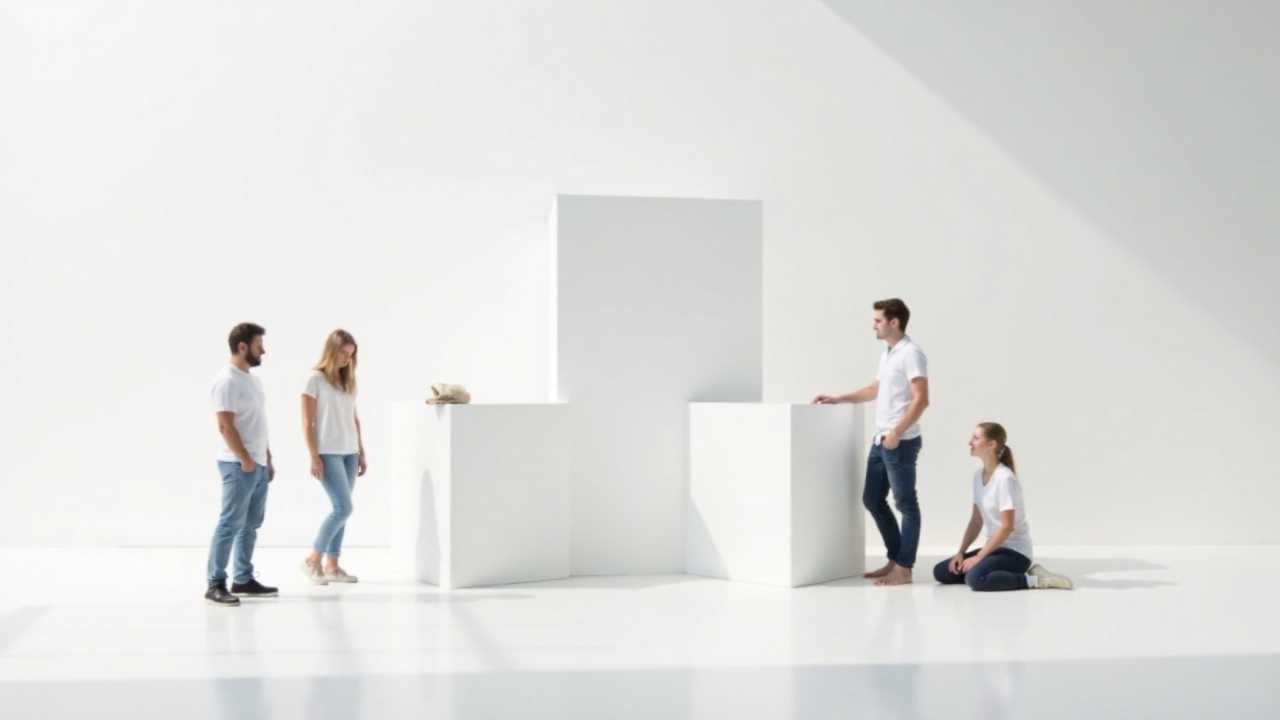
The Importance of Decluttering in Our Lives
In today's fast-paced world, decluttering has become more than just a trend; it is a vital practice for achieving a balanced and fulfilling life. The act of removing unnecessary items from our living spaces not only promotes tidiness but also enhances our mental clarity and emotional well-being. By embracing minimalism, we can create environments that foster peace and productivity.
Decluttering allows us to prioritize what truly matters, making room for experiences and relationships rather than material possessions. As we embark on this journey, we will explore effective strategies for organization, storage, and simplification that will transform our homes into serene sanctuaries.
Understanding Minimalism: A Path to Freedom
Minimalism is not merely about owning fewer things; it is a lifestyle choice that encourages us to focus on what is essential. By adopting a minimalist mindset, we can break free from the cycle of consumerism and the clutter that often accompanies it. This philosophy promotes intentional living, where each item we choose to keep serves a purpose or brings us joy.
To begin your minimalist journey, start by assessing your belongings. Ask yourself: Does this item add value to my life? If the answer is no, it may be time to let it go. Embracing minimalism can lead to a more organized and peaceful home, where every object has a designated place.
Effective Decluttering Strategies for Your Home
When it comes to decluttering, having a plan is essential. Here are some tried-and-true strategies to help you tackle the clutter in your home:
1. The Four-Box Method: This technique involves labeling four boxes as "Keep," "Donate," "Trash," and "Storage." As you go through each room, place items into the appropriate boxes. This method not only simplifies the decision-making process but also provides a clear action plan for each category.
2. The One-Year Rule: If you haven't used an item in the past year, consider whether it truly belongs in your home. This rule helps eliminate items that are simply taking up space and encourages a more intentional approach to what we keep.
3. Room-by-Room Approach: Focus on one room at a time to avoid feeling overwhelmed. Start with smaller spaces, such as a closet or a bathroom, before moving on to larger areas. This method allows for a sense of accomplishment as you see progress in each completed space.
4. Digital Decluttering: Don't forget about your digital life. Organize your files, delete unnecessary emails, and streamline your online presence. A clutter-free digital environment can significantly reduce stress and improve productivity.
Maximizing Storage Solutions for a Clutter-Free Home
Once you have decluttered, the next step is to implement effective storage solutions that promote organization. Here are some ideas to help you maximize your space:
1. Utilize Vertical Space: Install shelves or cabinets that reach up to the ceiling. This not only provides additional storage but also draws the eye upward, creating the illusion of a larger space.
2. Multi-Functional Furniture: Invest in furniture that serves multiple purposes, such as ottomans with hidden storage or beds with built-in drawers. These pieces can help you save space while keeping your home tidy.
3. Clear Containers: Use clear storage bins to organize items in closets or under beds. Being able to see the contents of each bin makes it easier to find what you need without rummaging through clutter.
4. Label Everything: Labels are a simple yet effective way to maintain organization. Clearly label storage bins, shelves, and drawers so that everyone in the household knows where items belong.
Creating a Simplified Lifestyle
Simplification goes hand in hand with decluttering and minimalism. By simplifying our lives, we can reduce stress and focus on what truly matters. Here are some tips to help you simplify your daily routine:
1. Establish Routines: Create daily and weekly routines that prioritize essential tasks. This can help streamline your day and reduce decision fatigue.
2. Limit Commitments: Learn to say no to activities and obligations that do not align with your values or goals. By limiting commitments, you can create more time for self-care and meaningful experiences.
3. Practice Mindfulness: Incorporate mindfulness practices into your daily life. This can include meditation, journaling, or simply taking a few moments to breathe deeply. Mindfulness helps us stay present and appreciate the simplicity of life.
Maintaining Tidiness: A Continuous Process
Achieving tidiness is not a one-time event; it is an ongoing process that requires commitment and effort. To maintain a clutter-free home, consider the following strategies:
1. Regular Check-Ins: Schedule regular decluttering sessions, whether monthly or seasonally. This will help you stay on top of any new clutter that may accumulate over time.
2. Adopt the One-In, One-Out Rule: For every new item you bring into your home, consider removing an existing item. This practice helps prevent clutter from building up and encourages mindful consumption.
3. Create a Decluttering Habit: Incorporate decluttering into your daily routine. Spend just a few minutes each day tidying up or organizing a specific area. Small, consistent efforts can lead to significant results over time.
4. Involve the Family: Encourage family members to participate in the decluttering process. Make it a fun activity by setting challenges or rewards for completing tasks together.
By embracing the principles of decluttering, organization, minimalism, storage, simplification, and tidiness, we can transform our homes into peaceful havens. This journey not only enhances our living spaces but also enriches our lives by allowing us to focus on what truly matters. As we adopt these practices, we pave the way for a more intentional and fulfilling lifestyle, free from the burdens of excess clutter.
 SportsHollywoodLifestyleFashionHome & GardenTrendsPrivacy PolicyTerms And Conditions
SportsHollywoodLifestyleFashionHome & GardenTrendsPrivacy PolicyTerms And Conditions
